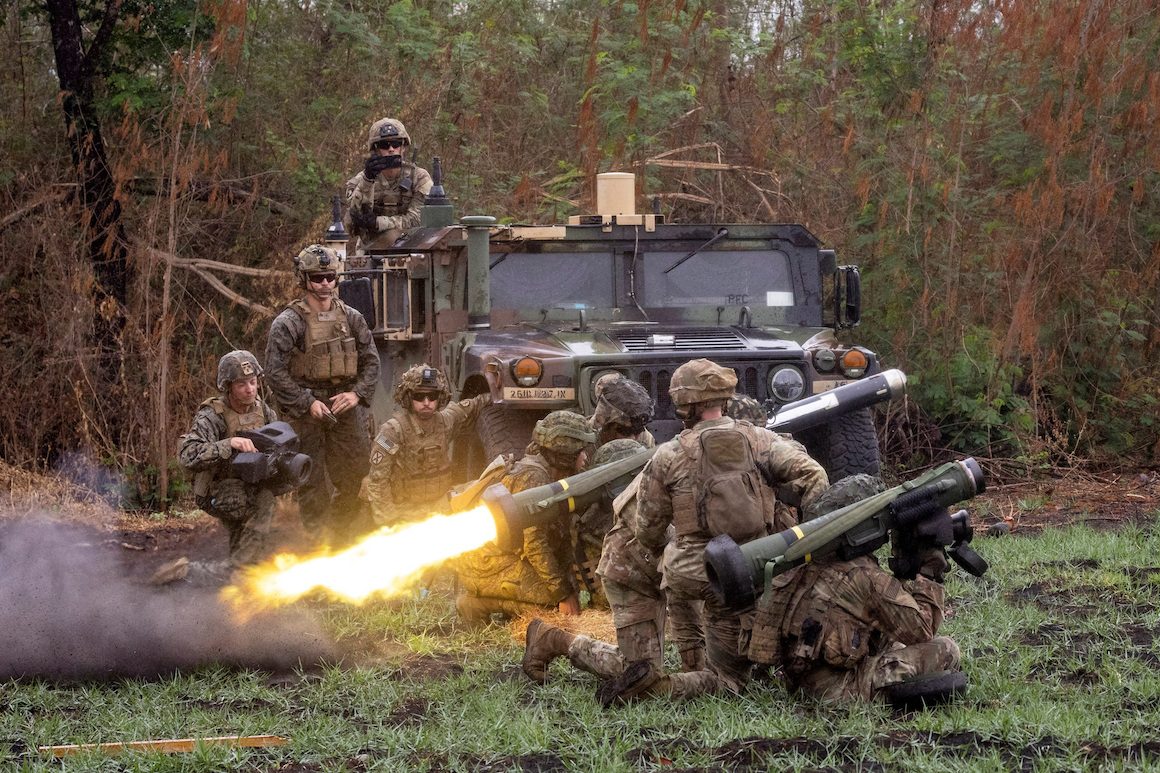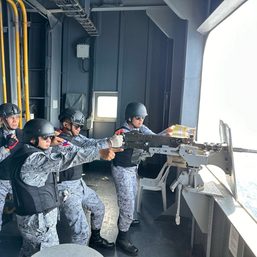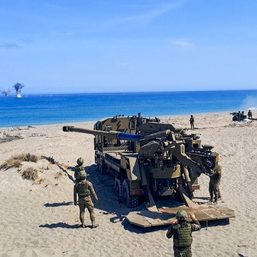SUMMARY
This is AI generated summarization, which may have errors. For context, always refer to the full article.

MANILA, Philippines – Over 16,000 soldiers from the Armed Forces of the Philippines (AFP) and the United States (US) military will be converging here for the “largest” annual joint training exercise between the two treaty-allies from April 22 to May 10.
The 39th Balikatan exercises will be held across several locations in the Philippines, from the Northern Luzon Command, the Western Command, and the Southern Luzon Command’s areas of operation. The three commands, collectively, cover a wide expanse of Philippine territory and waters – from President Ferdinand Marcos Jr’s bailiwick in northern Luzon, the waters of the West Philippine Sea, up to the southernmost Luzon islands.
In a briefing with media on Tuesday, April 16, Balikatan 2024 executive agent Colonel Michael Logico said that the 16,000 head count does not include Australian Defense Force and French Navy personnel who will also be participating in a multilateral maritime exercise or a joint sail.
Here’s what you should know about the weeks-long exercise:
What is Balikatan?
The exercise happens yearly, and is the largest among the many joint exercise activities between the Philippines and the US. The 38th iteration of the exercises in 2023, or the first under Marcos, were said to be the “largest” with over 17,000 American and Filipino troops, although Logico said only around 16,000 personnel actually participated in the weeks-long event.
Balikatan literally means “shoulder-to-shoulder.”
What is the point of Balikatan?
Any joint military exercise is focused on interoperability, or the ability of different units to work together.
It’s a way to practice and make sure that military units from different countries know how to effectively work together in case of a crisis – be it disaster response or armed conflict.
There’s also a more personal aspect to it – joint exercises like Balikatan make sure military leaders and commanders are familiar with each other on a personal level, making communication or coordination much easier during crunch time.
In a release, the US embassy in Manila said Balikatan “directly supports the US-Philippine Mutual Defense Treaty (MDT) by enhancing military cooperation and readiness between the two militaries.”
The MDT, signed in 1951, is a promise of both Washington DC and Manila to come to each others’ defense in the event of an armed attack. The treaty is one of three that form the two countries’ defense ties – the others being the Visiting Forces Agreement (VFA) and the Enhanced Defense Cooperation Agreement (EDCA).
During Marcos’ latest visit to Washington for the first trilateral summit between the US, Japan, and the Philippines, US President Joe Biden affirmed their commitment to the MDT. The US’ position is that the treaty “extends to both countries’ armed forces, public vessels, and aircraft — including those of its Coast Guard — anywhere in the Pacific, including the South China Sea,” amid China’s continuing aggression in the West Philippine Sea, or part of the South China Sea including where the Philippines has sovereign rights.
What happens during Balikatan?
According to the AFP, the exercises will cover external defense operations, cyber defense, counterterrorism, humanitarian assistance and disaster response, and interagency capacity-building. Balikatan has three main components, according to the AFP: Command and Control Exercise (C2X), Field Training Exercise (FTX), and Humanitarian Civic Assistance (HCA).
“C2X will encompass a Staff Exercise, a Cyber Defense Exercise, and an inaugural Information Warfighter Exercise, all designed to test the ability of AFP and US forces to plan, command, and communicate effectively in simulated scenarios,” it said in a release.
FTX covers a wide range of activities such as “joint all-domain operations, including vital maritime terrain protection, air assault operations, and reconnaissance activities.”
“Cutting-edge military assets” including the High Mobility Artillery Rocket System (HIMARS) Rapid Infiltration, Integrated Air and Missile Defense (IAMD), and various unmanned aerial systems are also part of the exercises.
Its highlight will be a Maritime Strike activity, which will feature “joint and combined fires, combined joint dynamic targeting, and multi-domain effects through the sinking of the adversary’s vessel.”
Another regular component of Balikatan is humanitarian activities, such as the construction of school buildings in Ilocos Norte and Cagayan province.
Who are part of Balikatan?
Aside from US and Philippine forces, soldiers from Australia and France will also be participating. Representatives from Brunei, Canada, France, Germany, Great Britain, India, Indonesia, Japan, Malaysia, New Zealand, Republic of Korea, Singapore, Thailand, and Vietnam will also be part of Balikatan as observers.
What’s new this year?
In 2024, the Balikatan includes a “Multilateral Maritime Exercise” or a joint sail between the Philippines, US, and French navies “within the Philippines’ exclusive economic zone.”
For the first time ever, white ships belonging to the coast guards of the Philippines and the US will also be take part in the joint sail.
But what does this all mean?
Balikatan is as much about preparation as it is about flexing – of the AFP’s capabilities, as well as the Philippines’ robust ties with its treaty-ally the US and its partners.
“The reason why we do exercises is to demonstrate our combat readiness and it is also a demonstration of our comprehensive archipelagic defense concept, you do exercises for that primary reason – to maintain a high level of readiness,” said Logico.
Lieutenant General William Jurney, commander of the US Marine Corps Forces, Pacific said Balikatan is a “tangible demonstration of our shared commitment to each other.”
“It matters for regional peace, it matters for regional stability. When we increase our mutual response and defense capabilities, we strengthen our ability to promote regional security and protect our shared interests,” he said. – Rappler.com
1 comment
How does this make you feel?










I am sure that Communist China and its local sycophants here will be very angry at this. This event is for the benefit of the Filipino People (even including the pro-China traitors) and the participating nations. I appreciate the approval of this event by President Marcos Jr. and the support of AFP Chief of Staff Romeo Brawner Jr.